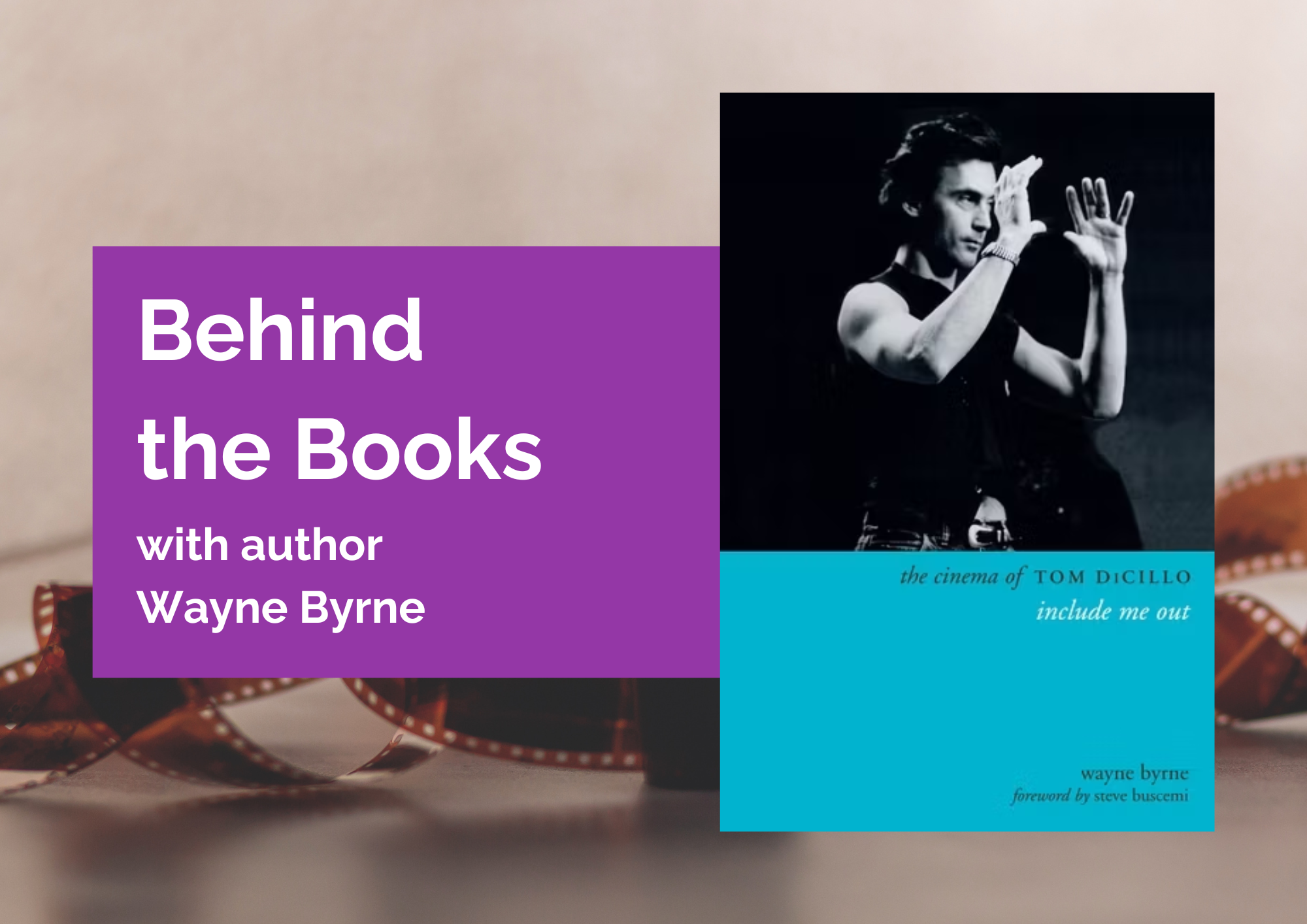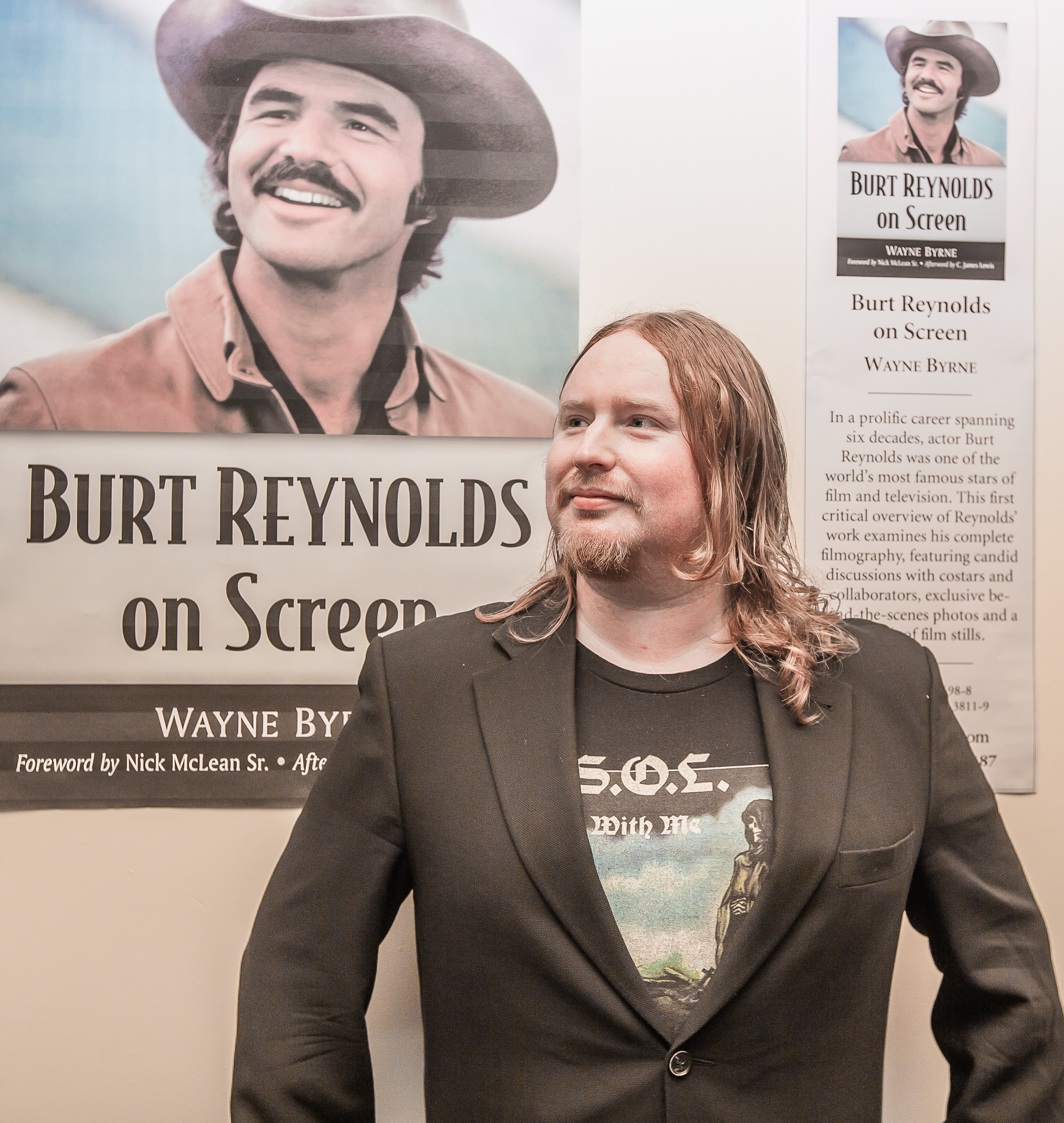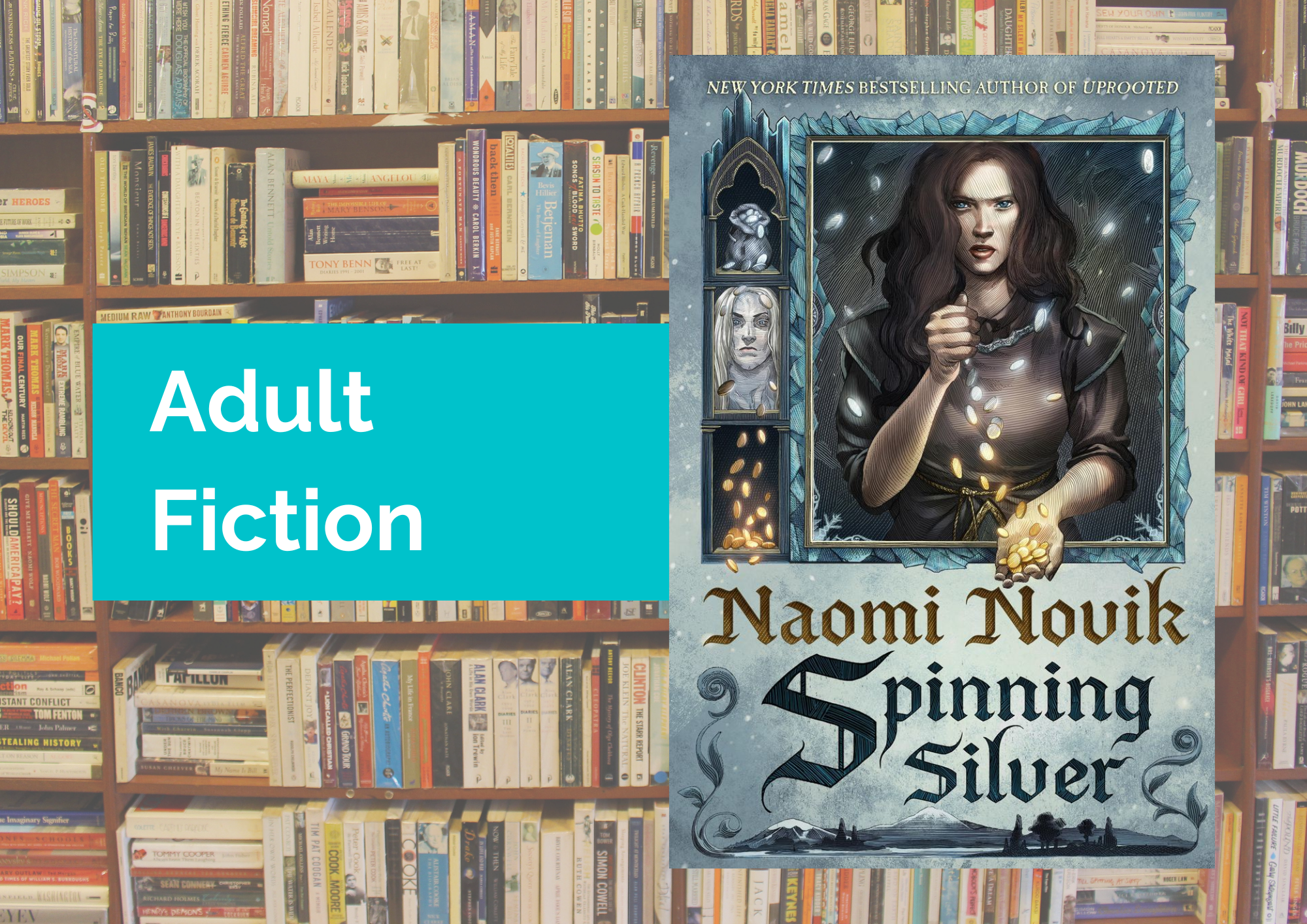By Wayne Byrne
In last week’s blog Wayne detailed his journey to becoming an author, against the odds. This week Wayne takes us through the making of his first book.
There is no formula to becoming a writer or having your book published. Every author’s path to publication is different. The way I did it cannot be taught in any class or workshop; at the risk over-simplifying it, I just did it. But there’s one man that I owe an enormous debt of gratitude to, and he is the subject of my debut book: The Cinema of Tom DiCillo: Include Me Out.
As I mentioned in my first entry in this blog series, Tom was a massive influence on me from a young age. I discovered his movies at just the right moment, at a tender age when the unfamiliar felt exotic and almost forbidden, and that for me was the uncharted waters of indie cinema and art films. I found Tom’s film Johnny Suede in a Naas video shop, sitting in the middle of the “World Cinema†section (an aisle I rarely frequented) quite conspicuous by its radiant VHS sleeve which featured Brad Pitt sitting in a bathtub with what I referred to as a “Johnny Bravo†hairdo. Something prompted me to diverge from my usually haunt of the horror shelves and to go take a chance on this unusual tape, and I soon experienced a mind-blowing encounter. This film bled style, an aesthetic I was unaccustomed to. It was surreal, dark, funny, unique in every respect, but I recognised some faces. I knew who Brad Pitt was, and I was also familiar with Samuel L. Jackson and Nick Cave. Catherine Keener was new to me, and like many others, I just fell in love with her immediately. So Johnny Suede wasn’t obscure in the way more underground independent films could be, the presence of these recognisable faces meant it eased you in to its unorthodox, alternative world. I can’t say I knew exactly what the film was about, thematically, at that age, but I knew I loved it and it felt exclusive to me, like this was mine – “you can keep your Jurassic Park, I have Johnny Suede!†such was my thinking. I adored it so much I tried to purchase this rental tape from the guy behind the counter at the video shop when I returned it. But he wouldn’t sell it to me…nor had I the money I was offering, it was just my futile attempt to cling on to it.
As mentioned in last week’s blog, years later I reached out to Johnny Suede director Tom DiCillo with an idea for a book on his work and that he was very receptive; as such, we soon embarked on a series of discussions on his life and films. This was all very surreal in itself, the idea that I would be collaborating with someone whom I class as a hero and a legend in American Film. Some interviewers have asked me about the minutiae of working on books and I always kind of recoil at the thoughts of discussing such banalities, I mean sitting in a corner typing on a laptop isn’t exactly intriguing or ripe for stimulating material, but this was an exciting journey for me and it may offer a brief insight into how my book came to be.
Being that Tom was living on the Upper West Side of Manhattan while I was ensconced in the more modest confines of a small village in County Kildare, Skype became our best friend, the conduit for our initial conversations. But despite the convenience of the technology, I thought it wiser if I were able to sit down with and get to know my subject, to “step into his world†so to speak. I applied for and gratefully received a travel bursary from Kildare County Council Library and Arts Service, so under the aegis of the Council I had the opportunity to fly to New York and stay there for a week. I had always wanted to visit New York, the land of so many of my movie memories. I didn’t have much time for sightseeing or tourist itinerary, but one of the places I was determined to find was the iconic Prasada apartment building that was used in the 1987 movie, Three Men and a Baby. That film is one of my earliest cinematic memories and its depiction of New York informed much of how I thought the city would be like. In the end, I never did find it, and I was gutted to later learn it was located right behind the very first pub I visited upon my arrival. I also learned that most of Three Men and a Baby wasn’t even filmed in New York City, but rather it was shot in the Canadian city of Toronto, the movie merely being embellished with occasional exterior scenes shots in NYC to give it a sense of location. Damn movie magic!
But there I was, in the Big Apple, about to visit the home of my favourite filmmaker, Tom DiCillo. To say I was nervous would be an understatement. I arrived to Tom’s door and I was greeted by this man who I have followed since I was about twelve years old. To my provincial Irish eyes, Tom was always the embodiment of a certain New York kind of cool: a hip, downtown, iconic cool with his artist sensibilities and handsome film-star features. But here he was, greeting me in his hallway and welcoming me into his home. I got a tour of his 15th floor apartment where I spotted props from the various films – the floating eyeball from Double Whammy, the golden apple from Living In Oblivion, the guitar from Johnny Suede! I was truly in awe. After some coffee and conversation we soon got down to the business at hand, which we structured as a discussion of one film per day, covering his seven films which would each get their own chapter in the book: Johnny Suede, Living In Oblivion, Box of Moonlight, The Real Blonde, Double Whammy, Delirious, When You’re Strange: A Film About The Doors. We would add a chapter on his eight film, Down in Shadowland later, as the film was made after my trip. So that was pretty much my schedule for the week. We spent many hours going through the making and legacy of each film. On the last night of my stay, my wife and I met Tom for a beautiful dinner at Josie’s on Amsterdam Avenue in Midtown Manhattan. I had gone from being back in Kildare and sitting in despair, accepting that I was unworthy to ever study film, to sitting in Manhattan, discussing life and art with my movie idol and writing a book. It was a memorable end to an unbelievable week. I cherish the memory.
As soon as I got home I began transcribing our discussions and at some point I had the idea that it would be great if we heard from Steve Buscemi, being that Steve stars in four of Tom’s movies and they have known each other forever; I also thought he would be ideal for writing the foreword. So Tom gave Steve a call and introduced the two of us. Being that Steve is one of my favourite actors and a major film and TV star (Reservoir Dogs, Fargo, Boardwalk Empire), this was another “pinch-me†moment. I ended up talking to Steve on several occasions and that went great, so Tom and I thought that maybe we could bring in a few other actors from the films. These are major stars and without Tom’s backing a request from me (first book, no credentials) would never go past their handler, or even their handler’s handler. But Tom introduced to me an amazing lineup of people that I could bring in on this project and interview. There followed my conversations with Chris Noth (Sex and the City, Law & Order), Catherine Keener (Being John Malkovich, Capote), Sam Rockwell (Moon, Iron Man 2), Peter Dinklage (Game of Thrones, Avengers: Infinity War), John Turturro (Barton Fink, The Big Lebowski) Matthew Modine (Full Metal Jacket, Birdy), Maxwell Caulfield (Grease 2, Empire Records), and many more, such as members of the legendary rock band, The Doors, including their guitarist Robby Krieger and drummer John Densmore. An interview with Johnny Suede himself, Brad Pitt, remained elusive, despite numerous times where it looked like we were going to finally talk. But all of these people generously gave their time and a wealth of material for me to work with, and my discussions with Tom continued as the book evolved. Our conversations never ceased, we were constantly working on this book to make it a definitive piece, and it paid off.
From the get-go I had one particular publisher in mind, Columbia University Press, who I thought would be ideal because of their series of books which are released under the “Director’s Cuts†banner. These books are written by some of the best in the field of film studies, top writers and film historians, and I had been collecting these books for years. Each one is devoted to the career of its subject and I own several editions, including those on Clint Eastwood, John Carpenter, David Cronenberg, and others, and I used to hound books stores and libraries to see if there was one available on Tom DiCillo, because I was hungry for material on this great director. When I was younger I day-dreamed of the moment I could walk into the Irish Film Institute and pick up that book. Every time I would visit there I would ask the guys in the book department, “Can you get me something on Tom DiCillo? Are they going to release one?â€
So when I was working on my book I fantasised that it would be the ultimate achievement to be the one who finally put that Director’s Cuts tome on Tom DiCillo onto that shelf. Well, in October 2017, I walked into the Irish Film Institute and there it was: my dream had come through! Earlier that year I signed a contract with said prestigious publisher, Columbia University Press and within months they released The Cinema of Tom DiCillo: Include Me Out. I am now an author, but more importantly, I finally got that Tom DiCillo book I always wanted, and in the process my hero became my friend and a mentor.








Leave a Reply